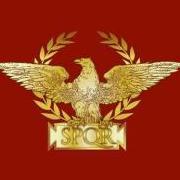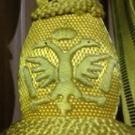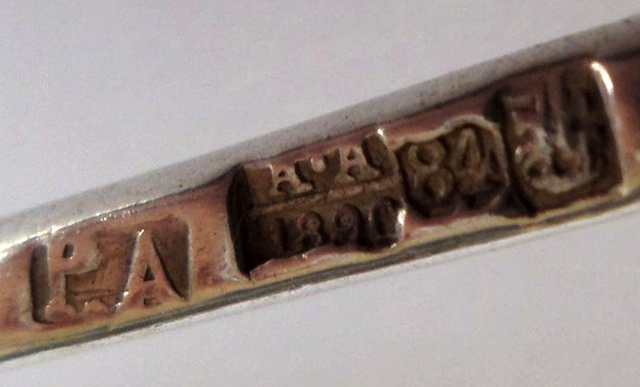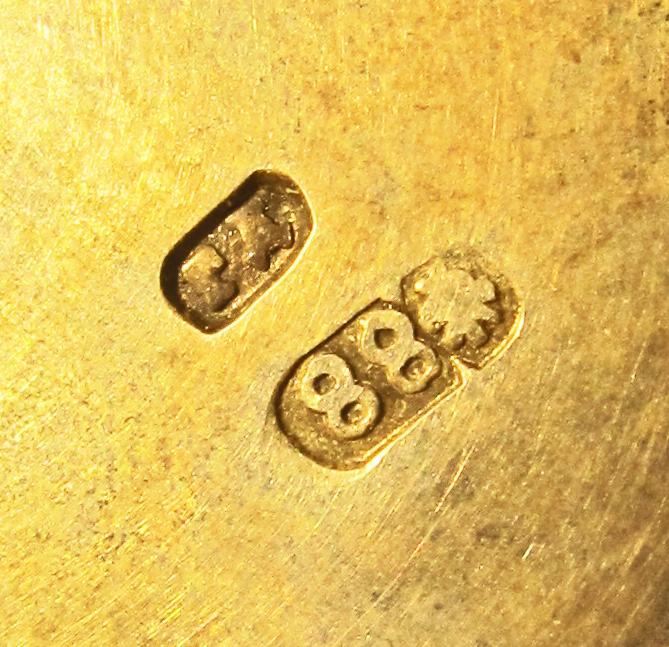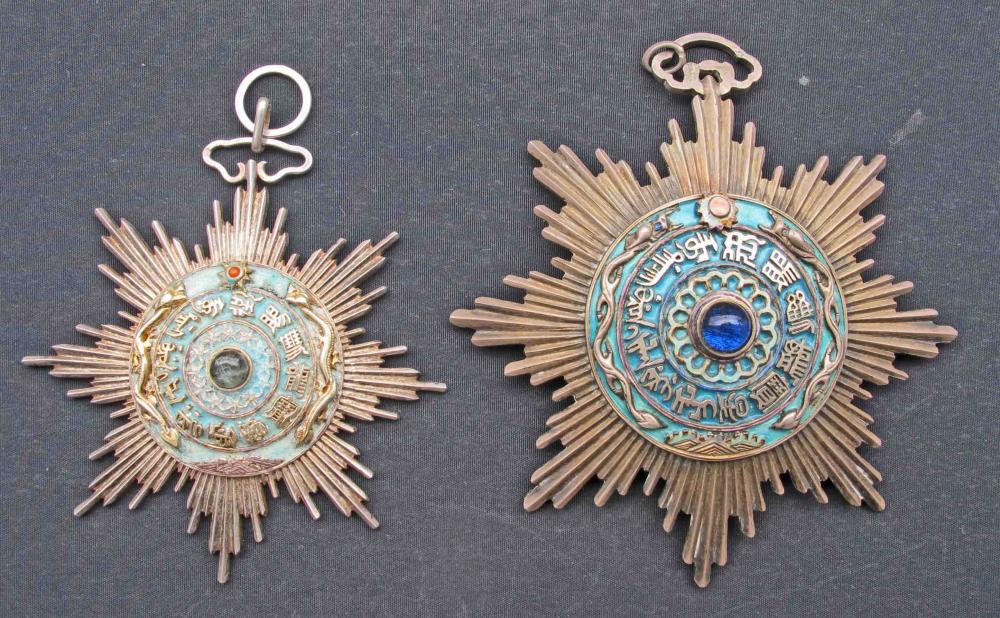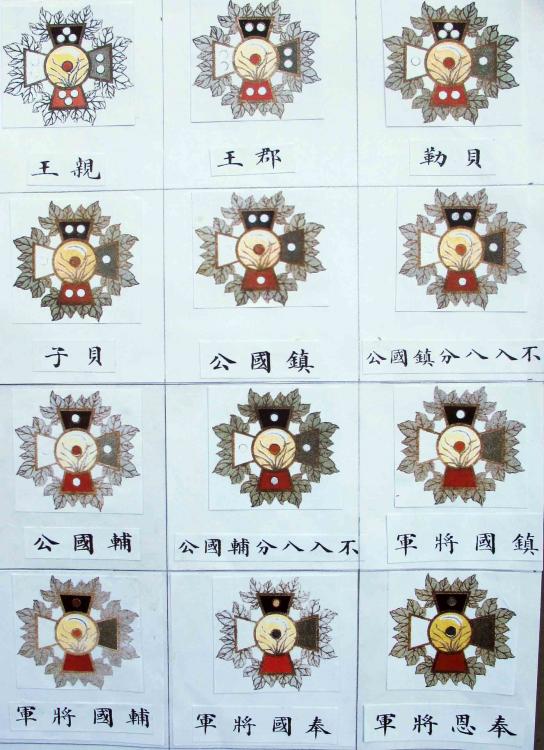
KIMKAN
Valued Member-
Posts
63 -
Joined
-
Last visited
About KIMKAN

Profile Information
-
Gender
Male
-
Location
Paris - France
-
Interests
Far-eastern countries -
Recent Profile Visitors
3,023 profile views
KIMKAN's Achievements
-
Bartholomew started following KIMKAN
-
Dear all, Internet research has provided three images of the Roman Aristarkhov punchmark. Well, from a distance they look somewhat similar to that of my September 2017 question. The ГД = GD possibility must be worked out further as it has plenty of potential as well. The crux of the matter will be the actual name behind "GD" operating in St. Petersburg circa 1890-1900. Regards to all. KimKan
-
Dear all, China provided workers to assist French and England during World War I. As far as France is concerrned, circa 40.000 Chinese workers moved to France between 1916 and 1918 to support its war effort in various industries (factories, harbours, mines, agriculture etc....) as almost all valid French men had to join fighting units. All Chinese workers had a work contract and could not participate to any military action (working in defense industry was common practice though in breach of formal agreements with China). None has ever been involved with actual battle situation. No official French award has ever been issued to commemorate this rather unknown contribution. As far as I can tell, China has not done anything official as well. The only solution left is that of private veterans associations. I am of the opinion that this medal belongs to this unofficial category. Regards to all. KimKan
-
Dear all, Research conducted outside GMIC leads to believe that it could be a "P.A", (i.e "R.A" in latin alphabet) punchmark belonging to silversmith Roman Aristarkhov who was very active in Moscow in the years 1890-1900, i.e perfectly in line with a Chinese imperial award as some were made in Russia at that time and bear the initials of famous silversmiths (Bogdanov, Rupert etc....). The only issue to solve is why a Moscow-made award would end up in a Saint Petersburg store with the name of another famous siversmith on the box. Sub-contracting is a possibility as A.A Treidyen of Saint Peterburg could very well have sold items made by other silversmiths, not necessarily based in Saint Petersburg. Interesting stories behing a very simple punchmark.... Regards to all. KimKan
-
Dear all, Belated and sincere thanks to Joseph - Alpha Draconis - for his valuable input. I have not been able to get the medal back as I am not its owner. If I recall correctly, it was a foreign order, not a Russian order. A Chinese order of the Double Dragon is what I can recall though I did not examine it thoroughly. It was cased in a box bearing the stamp of A.A TREIYDEN in Saint Petersburg. Thanks anyway. Regards. KimKan
-
Dear all, Apparently, there are still some imperial nobility badges floating around as one of them is listed on the new Morton & Eden auction catalog and will be auctioned off on November 23rd + many many other Chinese items. These M&E catalogs are really well made and must be kept as important references over time. Regards KimKan
-
Dear all, Attached picture shows two punchmarks on the reverse side of a Russia-made breast star. A typical combined city and standard mark for St Petersburg + 88 zolotniki - is quite easy to read. The master's mark is more difficult to identify. The first letter looks like a "r" and the second like a "A", though both are somewhat blurred and not neatly struck. I have not found a possible match on the various links already provided on this site. Any idea on this silversmith's idendity ? Thanks in advance. Regards to all. KimKan
-
Dear all, A picture being worth a thousand words, two Double Dragon 3rd Class neck badges. The small 1st Grade is circa 75 mm wide and the larger 3rd Grade is close to 90 mm wide. Various makers, various standards....I do not think that there is any specific information or lesson to draw from that. Regards. KimKan
-
Dear all, Looking at the 1909 Nobility Badge decree, it is quite easy and fun to clip the various images pertaining to each grade. There are no less than 12 possible badges with tung leaves only, each with a different number of pearls, colours etc.... I suspect that a similar number of badges should come with tung leaves AND peony flowers. At the end of the day we should have close to 24 possible badges for the imperial period (yellow center). This is a highly complex system of badges that required a sharpshooter's eye to tell the right position of its wearer ! .... What puzzles everyone is the fact that these imperial area badges (almost) never turn up on the market while they were apparently structured to cover a fairly large population of noble people, ranging from first rank princes to marquis or viscounts. I do not know how many hundreds or thousands of peole this noble population included but we get absolutely nothing (or close to that) at the end of the pipe ! Can we be that sure that all of them were made and distributed ? The republican area Order of Rank and Merit is quite difficult to encounter indeed. The imperial area Nobility Badge is a collector's dream that is likely to never come true. Regards. KimKan
-
Dear all. Reply is YES, especially when it comes to badges made by European houses. The 75 mm wide is not the smallest size one can come across. Regards. KimKan
-
Dear all, Many interesting items on this post. The round silver medal with the words "mariage chretien" on the obverse and the intertwinned letters BI on the reverse has nothing to do with China or any other Far-Eastern country. This is a French silver wedding medal ("mariage chrétien" = "christian wedding"), a typical token offered in the 19th century to newly wed couples. The two letters on the reverse side are the initials of the bride and groom. Regards. KimKan
-
Dear all, This is it, this magnificent gold Chinese medal had to be auctioned off again as the mysterious April 2014 bidder never turned up to pay the 92,000 Euros he committed to. It was presented again on April 3rd 2015 by the same auction house in Paris and went for circa 28.000 Euros, all fees included. Still a nice price and an absolutely incredible piece with a solid pedigree. This is just one third of what it apparently went for one year ago as deposits and guarantees were required by the auction house to secure the transaction. A penny in your pocket is still better than a shilling in your dreams... Regards to all. KimKan
-
Dear all, This is it, the Pao Hsing 2nd Class in gold went for 21.500 Euros (including auction fees), i.e circa 24.000 US$ or 16.000 UK£. This was the highlight of the orders and medals sold that day. My April 5th 2014 thread on GMIC shed light on a similar attributed award (1st Class) which went for an astonishing 92.000 Euros, i.e 4 times more than two days ago. However, I take from the horse's mouth that it was never paid by the overseas "buyer". It is likely that auction houses have tightened their security process to avoid stupid bids like that, hence an apparently lower price though perfectly clean and reliable. The medal sold two days ago was nothing but a striking piece of Chinese jewellery with a robust pedigree, well worth the price paid for it. Regards to all. KimKan
-
Dear all, A hard-to-find 2nd Class Pao Hsing medal in pristine condition will be on sale at public auction in Paris next week : http://www.beaussant-lefevre.com/flash/index.jsp?id=21817&idCp=92&lng=fr A beautiful piece indeed bestowed upon a French civil engineer in 1881, just one year before the creation of the Double Dragon. Estimate of 8,000 to 12,000 Euros seems a bit low for that type of medal. We will see next week where the market stands. Regards to all. KimKan

